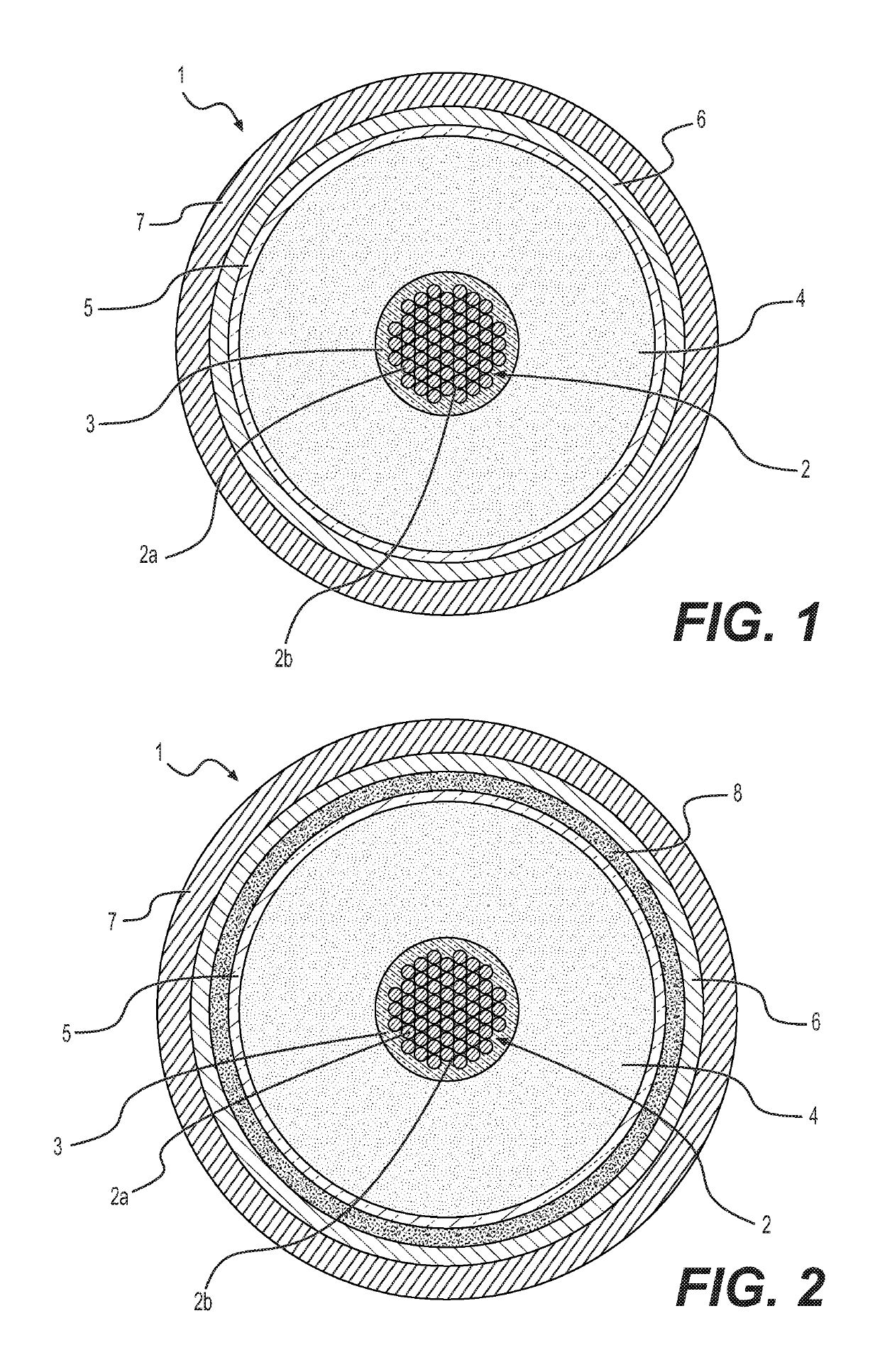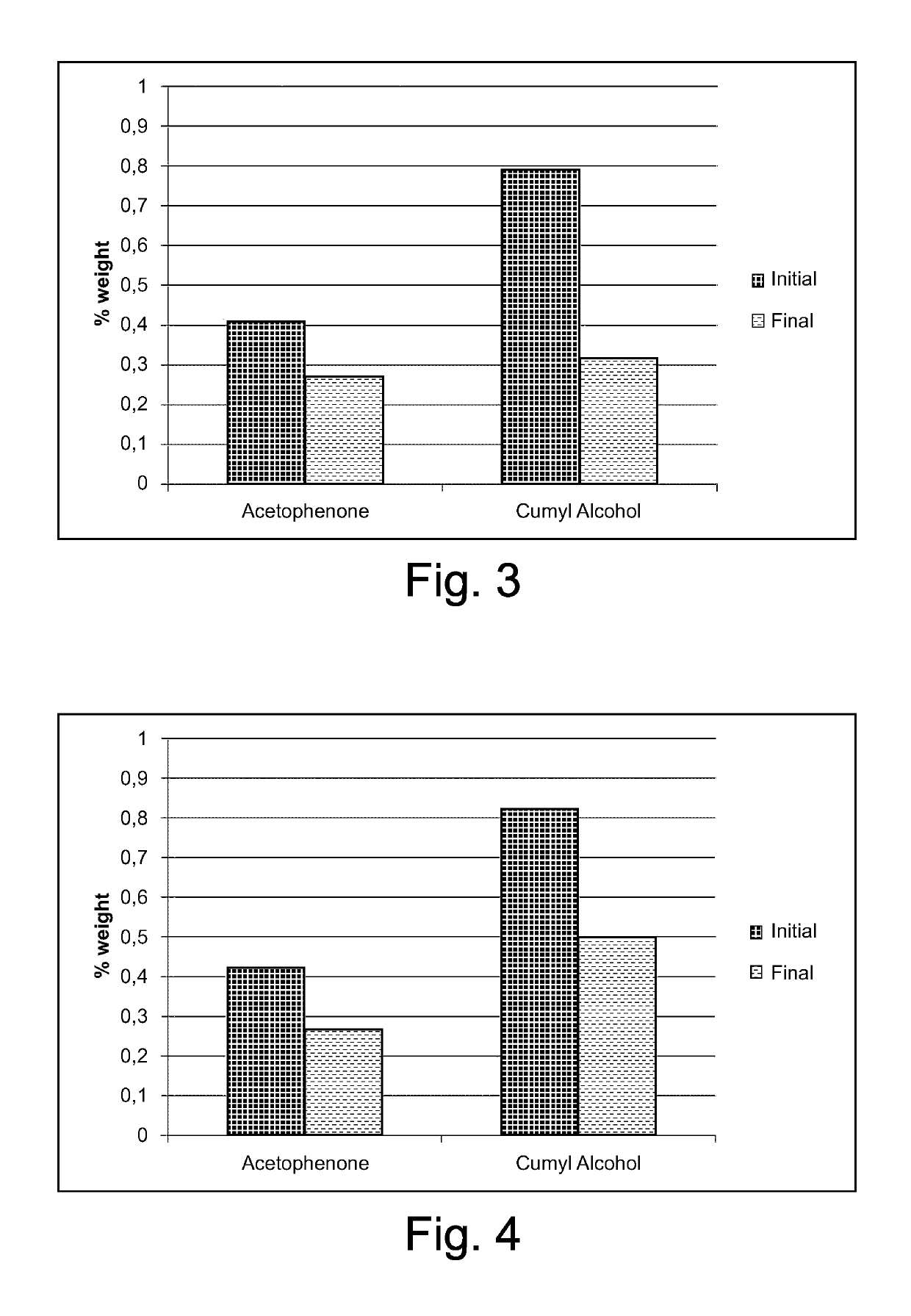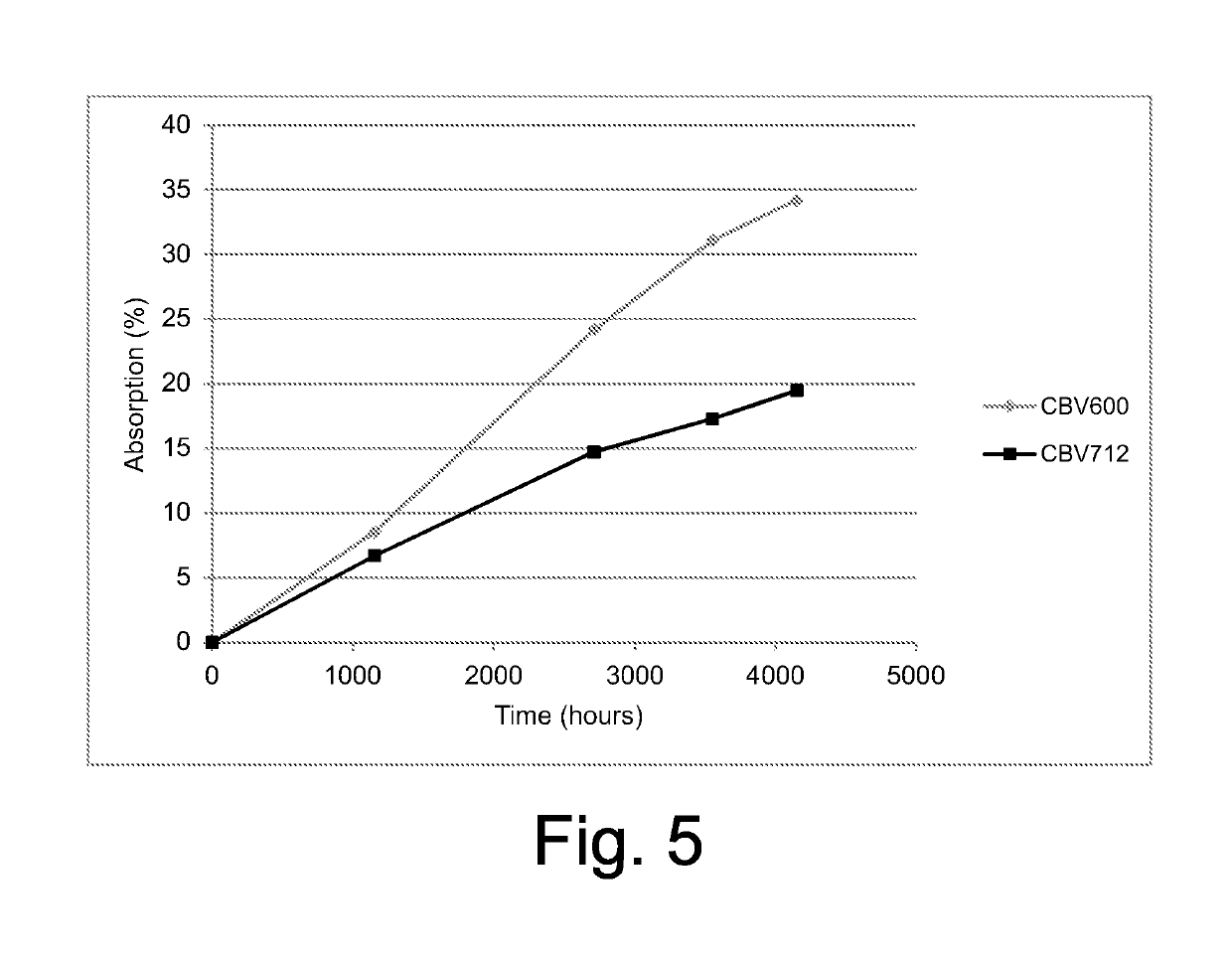Energy cable having a crosslinked electrically insulating layer, and method for extracting crosslinking by-products therefrom
a technology of crosslinking and electrical insulation, which is applied in the direction of insulated conductors, power cables, cables, etc., can solve the problems of increasing to a large extent the time and production costs of dc energy cables, voids, and electrical discharges, so as to reduce temperature and/or duration, increase productivity, and reduce manufacturing costs
- Summary
- Abstract
- Description
- Claims
- Application Information
AI Technical Summary
Benefits of technology
Problems solved by technology
Method used
Image
Examples
examples 1-7
[0067]Some tests were carried out to evaluate the ability of different materials to absorb cumyl alcohol, one of the major by-products deriving from crosslinking reaction of polyethylene with cumyl peroxide. Each material in the form of fine particles was placed in an amount of about 0.6 g in little bags made from a non-woven polyester fabric, which are porous so as to allow free migration of cumyl alcohol molecules.
[0068]The little bags of the materials to be tested were placed in a cylinder made from aluminum, having a plurality of recesses to host the samples and a central circular cavity where a glass beaker containing cumyl alcohol was placed. In one of the recesses a fully degassed sample of crosslinked polyethylene (XLPE) was placed to measure the solubility of cumyl alcohol in that material as reference. The cylinder, containing the little bags of the materials to be tested, the sample of XLPE and the cumyl alcohol, was fastened with a closing plate provided with an O-ring t...
examples 8-11
[0073]In order to simulate the conditions in an energy cable, the absorption ability of zeolite CBV 600 was evaluated according to the following method.
[0074]The crosslinkable Borealis LE 4253, commonly used as insulating material for DC energy cables, was used to produce discs of freshly crosslinked polyethylene as disclosed above.
[0075]A disc of freshly crosslinked LE 4253 (diameter 140 mm, thickness 2.87 mm) was placed in a cylinder similar to that of Examples 1-7, but devoid of recesses and cavity to host samples and container, and three little bags as described in Examples 1-7 containing zeolite CBV 600 were placed on the disc (weight ratio zeolite / LE 4253=0.013). The testing device was closed airtight and maintained at the testing temperature (60° C. or 40° C.) for 16 days. In the diagrams of FIGS. 3-4, the amounts of acetophenone and cumyl alcohol in the LE 4253 disc as such (i.e. just after crosslinking) and after contact with the zeolite are reported. A remarkable reduction...
examples 12-13
[0076]In order to evaluate the ability of the zeolite particles to absorb the crosslinking by-products even during storage at room temperature, a sample of zeolite CBV600 (Example 12) or of zeolite CBV712 (Example 13) was placed into a bag made from Polylam™, where also a small container containing cumyl alcohol was placed. The bag was hermetically closed. The amount of cumyl alcohol absorbed by the zeolite sample was measured over time by extracting the zeolite sample from the bag after a certain time. The results are reported in the diagram of FIG. 5, from which it appears that the zeolite continued to absorb cumyl alcohol even after more than 4000 hours of exposure at 23° C. From these data, we can derive that the zeolite particles placed in the vicinity of the insulating layer of an energy cable should be able to eliminate the crosslinking by-products not only during degassing heating but also during storage of the cable at ambient temperature.
PUM
| Property | Measurement | Unit |
|---|---|---|
| molar ratio | aaaaa | aaaaa |
| temperature | aaaaa | aaaaa |
| temperature | aaaaa | aaaaa |
Abstract
Description
Claims
Application Information
 Login to View More
Login to View More - R&D
- Intellectual Property
- Life Sciences
- Materials
- Tech Scout
- Unparalleled Data Quality
- Higher Quality Content
- 60% Fewer Hallucinations
Browse by: Latest US Patents, China's latest patents, Technical Efficacy Thesaurus, Application Domain, Technology Topic, Popular Technical Reports.
© 2025 PatSnap. All rights reserved.Legal|Privacy policy|Modern Slavery Act Transparency Statement|Sitemap|About US| Contact US: help@patsnap.com



